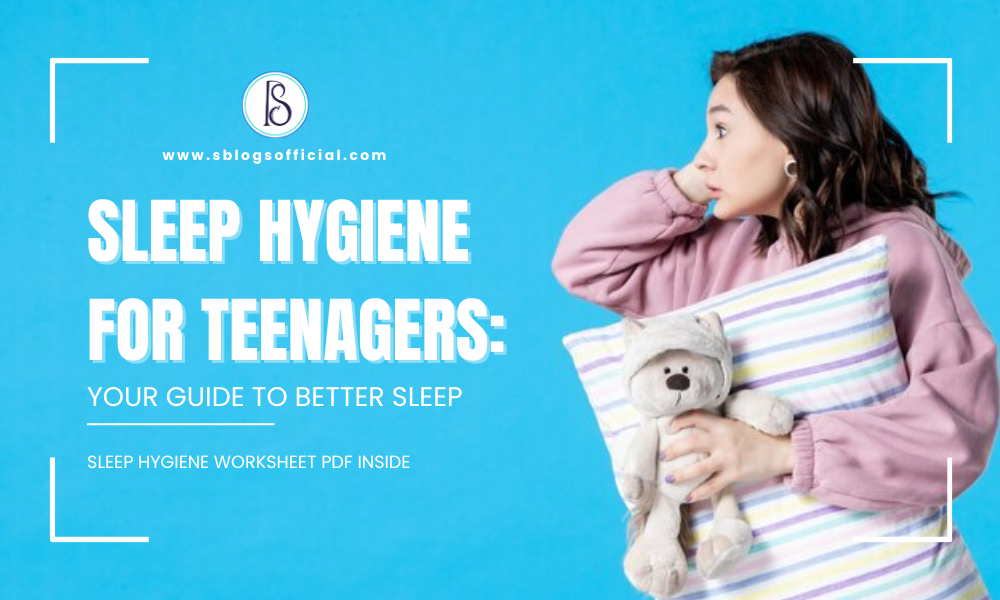
Getting enough sleep as a teenager can feel like trying to solve a complex puzzle. Between late-night homework, social media, and your body’s natural rhythms, finding the right sleep balance might seem impossible. But don’t worry – we’re here to help you unlock the secrets of good sleep hygiene!
Why is Sleep Hygiene Important?
Think of sleep hygiene as your personal recipe for quality sleep. Just as you need to brush your teeth daily for good dental health, your sleep needs regular care too! Research shows that teenagers who practice good sleep hygiene are more alert, perform better in school, and even have better mental health.
The numbers speak for themselves:
- Teenagers need 8-10 hours of sleep each night
- 73% of teens don’t get enough sleep
- Good sleep hygiene can improve sleep quality by up to 60%
Understanding Teen Sleep Patterns
Adolescence brings significant changes to sleep architecture and timing, driven by both biological and social factors. During the teenage years, the body’s internal clock naturally shifts later, affecting when teens feel tired and alert. This biological shift often conflicts with early school start times and other commitments.
Recognizing these natural changes helps parents and teens work together to create effective sleep strategies. Rather than fighting against these biological patterns, understanding them allows for more realistic and sustainable sleep solutions.
Why Do Teenagers Sleep Late?
It’s not just about being rebellious! During puberty, your body’s internal clock (circadian rhythm) naturally shifts later. This “sleep phase delay” means most teens don’t feel sleepy until around 10:30 PM or later. It’s biology, not laziness!
What Should a 14-Year-Old’s Bedtime Be?
Determining an appropriate bedtime for a 14-year-old requires balancing biological needs with practical considerations like school schedules and extracurricular activities. While there’s no one-size-fits-all answer, understanding the science behind teen sleep patterns can help establish realistic bedtime goals.
The key is finding a schedule that ensures adequate sleep while accounting for the natural shift in circadian rhythms that occurs during adolescence. This often means navigating between ideal sleep timing and real-world demands.
While every teenager is different, here’s a general guide:
- School nights: 9:00-10:00 PM
- Weekends: Try not to shift more than 1-2 hours later
- Wake-up time: Keep it consistent!
Remember, it’s about quality as much as quantity.
Sleep Scores by Age
Understanding what good sleep looks like at your age can help set realistic goals:
- Ages 13-14: Need 9-10 hours
- Ages 15-16: Need 8-9 hours
- Ages 17-19: Need 8-9 hours
A good sleep score isn’t just about hours – it’s about how refreshed you feel when you wake up!
Natural Sleep Aids for Teenagers
As teens struggle with changing sleep patterns and increased stress, natural sleep aids can offer safe alternatives to prescription medications. These solutions work with the body’s natural processes to promote better sleep without the risk of dependency or harsh side effects.
From dietary supplements to relaxation techniques, natural sleep aids can help teens establish healthy sleep patterns. However, it’s important to understand both the benefits and limitations of these approaches, using them as part of a comprehensive sleep strategy rather than quick fixes.
Skip the sleeping pills! Try these natural alternatives instead:
- Warm milk with honey
- Chamomile tea
- Lavender essential oil
- White noise machines
- Gentle stretching before bed
Some Other Important Aspects of Sound Sleep
Beyond the basics of bedtime routines and sleep schedules, several environmental and lifestyle factors play crucial roles in achieving quality sleep. These often-overlooked elements can significantly impact sleep quality and deserve careful consideration when creating optimal sleep conditions.
For instance, factors like room temperature, ambient noise levels, and even bedroom decor can influence how quickly you fall asleep and the quality of your rest. Understanding and optimizing these aspects can make the difference between tossing and turning versus drifting peacefully to sleep.
Creating the perfect sleep environment is crucial:
- Keep your room cool (16-18°C)
- Use blackout curtains
- Remove electronic devices
- Consider a comfortable mattress and pillows
- Use calming colours in your bedroom
Sleep Hygiene Practices for Teenagers
- Create a Relaxing Bedtime Routine
- Limit Screen Time Before Bed
- Avoid Caffeine After 2 PM
- Exercise During the Day
- Keep a Regular Sleep Schedule
Sleep Hygiene for Kids
Creating healthy sleep habits early in childhood sets the foundation for lifelong good sleep. Children’s sleep needs differ significantly from teenagers, requiring special attention to routines and environment. Young kids thrive on consistency and clear boundaries around bedtime, making parental guidance crucial in establishing proper sleep hygiene.
Research shows that well-rested children perform better academically, have improved emotional regulation, and experience fewer behavioral issues. By implementing proper sleep hygiene practices early, parents can help their children develop healthy sleep patterns that will benefit them throughout their lives.
While this guide focuses on teens, younger siblings might need help too! Key differences for kids include:
- Earlier bedtimes
- Longer sleep requirements (10-12 hours)
- More structured bedtime routines
- Greater parent involvement
Sleep Hygiene Worksheets
Tracking your sleep habits can make a huge difference in improving them. Our worksheets help you:
- Monitor your sleep patterns
- Identify sleep disruptors
- Set realistic sleep goals
- Track progress
- Create personalised bedtime routines
Sleep Hygiene Worksheet pdf
Conclusion
Good sleep isn’t just about spending time in bed – it’s about creating habits that help you get the rest you need. Remember, everyone’s sleep needs are different, so use these guidelines to find what works best for you. Sweet dreams!
